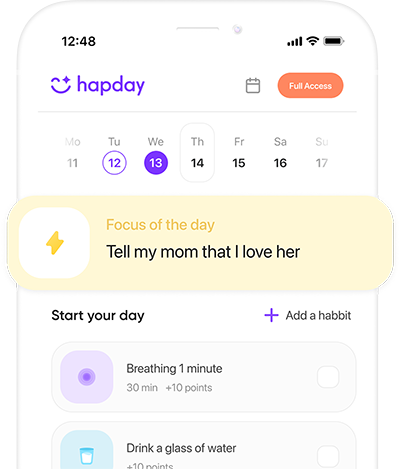Think about the most successful people you know at work—not just the ones who’ve climbed the ladder, but those who genuinely seem to thrive, no matter the challenge. What sets them apart isn’t just talent or luck; it’s their mindset. Specifically, it’s what psychologists call a “growth mindset”—the belief that skills and intelligence can be developed over time. Instead of fearing challenges, people with a growth mindset view setbacks as opportunities to learn and improve.
A growth mindset is particularly powerful in the workplace, where you’re constantly facing new challenges, collaborating with diverse teams, and being asked to adapt and innovate. Studies show that employees with a growth mindset are 47% more likely to feel empowered and 39% more likely to be engaged at work, according to research published in Harvard Business Review. When you bring a growth mindset to your career, you’re not just showing up to work; you’re actively investing in your development and future success.
If you’re ready to embrace this approach, here’s a look at what a growth mindset really is, why it matters in the workplace, and practical steps to help you build it.
What Is a Growth Mindset?
A growth mindset is the belief that your talents and abilities can be developed through effort, learning, and persistence. It’s the opposite of a fixed mindset, where people believe their skills and intelligence are static traits. When you approach work with a growth mindset, you’re more open to feedback, willing to try new strategies, and less likely to feel defeated by failure.
Key Traits of a Growth Mindset:
- Embrace of Challenges: Seeing challenges as opportunities to learn rather than threats to avoid.
- Persistence: Staying committed even when things get tough, knowing that effort leads to improvement.
- Openness to Feedback: Viewing feedback as a tool for growth rather than criticism.
- Celebration of Others’ Successes: Being inspired by others’ accomplishments instead of feeling threatened by them.
When you adopt a growth mindset, it fundamentally changes how you interact with challenges, colleagues, and your own potential. And while it can be a powerful tool for personal growth, it also has big implications for your career.
Why a Growth Mindset Matters in the Workplace
In today’s workplace, adaptability is everything. With the rapid pace of technological change, the rise of remote work, and evolving job requirements, employees who can learn and adapt are incredibly valuable. A growth mindset isn’t just about improving your own skills; it’s about creating a more resilient, collaborative, and motivated work environment.
The Benefits of a Growth Mindset at Work:
- Increased Resilience: With a growth mindset, you’re less likely to be discouraged by setbacks or failure.
- Higher Levels of Innovation: People who embrace learning are more willing to experiment and try new approaches.
- Better Team Dynamics: When everyone is focused on learning and growth, there’s less room for ego or competition, and more room for collaboration.
- Career Growth: A growth mindset prepares you to take on new challenges and responsibilities, which can lead to more opportunities.
Practical Steps to Cultivate a Growth Mindset at Work
Building a growth mindset is like building a muscle—it takes practice, patience, and a willingness to try. But with the right approach, you can shift how you view challenges, setbacks, and successes in a way that’s more positive and productive.
1. Embrace Challenges as Learning Opportunities
Challenges are often where the best learning happens. Instead of shying away from tough projects or assignments that feel out of your comfort zone, start seeing them as opportunities to build new skills and broaden your expertise.
How to Reframe Challenges:
- Start with Curiosity: When you face a challenging task, ask yourself, “What can I learn from this?”
- Set Small Goals: Break down a challenging project into smaller steps, so it feels manageable and allows you to celebrate small wins.
- Ask for Help When Needed: A growth mindset means understanding that you don’t have to tackle everything alone. Seeking input from colleagues can give you fresh perspectives.
Example: If you’re assigned to lead a project for the first time, instead of feeling overwhelmed, view it as a chance to build leadership skills. Try breaking down tasks, setting achievable milestones, and reaching out to a mentor for guidance.
2. Learn to Accept and Seek Out Feedback
Feedback is a core part of professional growth, but it’s easy to take it personally. With a growth mindset, you can see feedback as a tool that helps you improve rather than as a criticism of your abilities. This shift in perspective can make you more open to constructive feedback and willing to seek it out.
How to Make Feedback Work for You:
- Ask Specific Questions: When seeking feedback, ask questions like, “What could I do to make my presentation stronger?” or “What skills should I work on to improve in this role?”
- Separate Feedback from Self-Worth: Remember that feedback is about your work, not about you as a person. This mindset helps keep feedback objective and actionable.
- Thank the Person for Their Input: Whether or not you agree with the feedback, show appreciation for the insights they provided.
Example: After completing a project, ask your supervisor for feedback on what went well and where you can improve. This shows you’re committed to growth and gives you valuable insights for future projects.
3. Cultivate a “Yet” Mindset
A simple but powerful way to shift to a growth mindset is by adding the word “yet” to your self-talk. When you catch yourself thinking, “I can’t do this” or “I’m not good at this,” try reframing it as “I can’t do this yet” or “I’m not good at this yet.” This small shift in language reminds you that skills are developed over time, and abilities can grow with effort.
Ways to Use the “Yet” Mindset:
- Challenge Negative Self-Talk: Whenever you feel discouraged, remind yourself that growth is a process.
- Apply it to New Skills: When learning something new, whether it’s a software program or a soft skill like public speaking, remind yourself that improvement will come with practice.
- Use “Yet” in Goal-Setting: Instead of focusing on what you haven’t achieved, set goals around what you’re working toward.
Example: If you struggle with presentations, tell yourself, “I’m not where I want to be with public speaking yet, but I’m getting better each time I practice.” This shift helps build confidence and keeps you moving forward.
4. Focus on Process Over Perfection
A growth mindset isn’t about being perfect; it’s about valuing progress and effort. Instead of worrying about having a flawless outcome, start paying attention to the process—the skills you’re building, the insights you’re gaining, and the improvements you’re making along the way. This approach not only makes work feel more fulfilling but also reduces the pressure to “get it right” every time.
Tips for Focusing on the Process:
- Celebrate Small Wins: Acknowledge every step you take toward improvement, no matter how small.
- Look for Lessons in Setbacks: When things don’t go as planned, instead of feeling discouraged, ask yourself what you can learn.
- Reflect on Progress Regularly: Take time to look back and see how far you’ve come. It’s a powerful reminder that growth is happening, even if it feels slow.
Example: If a project doesn’t go as planned, instead of dwelling on what went wrong, reflect on what you learned. Perhaps you gained insights on time management or discovered ways to improve collaboration. This perspective helps you grow instead of feeling defeated.
5. Surround Yourself with Growth-Minded People
Mindsets can be contagious. When you surround yourself with people who embrace learning, seek out feedback, and view challenges as opportunities, it reinforces your own growth mindset. Look for mentors, colleagues, or friends who share this perspective, and try to learn from their approach.
How to Connect with Growth-Minded People:
- Seek Out Mentorship: Find someone whose growth mindset you admire, and ask if they’d be open to mentoring you.
- Engage in Learning Communities: Join groups, classes, or online communities that focus on personal and professional development.
- Collaborate with People Who Push You: Working with colleagues who challenge you in positive ways helps you stay motivated and open to new perspectives.
Example: If you have a colleague who’s known for tackling new projects with enthusiasm, consider reaching out to learn more about their approach. Observing how they handle challenges can inspire you to adopt similar habits.
6. Practice Self-Compassion Along the Way
Building a growth mindset isn’t about eliminating all mistakes; it’s about seeing them as part of the journey. Practicing self-compassion—being kind to yourself when things don’t go perfectly—is essential for sustaining a growth mindset. It reminds you that setbacks are just stepping stones, not stopping points.
Self-Compassion Techniques:
- Reframe Mistakes: Instead of labeling mistakes as failures, see them as experiments. Ask yourself, “What did I learn?”
- Celebrate Effort, Not Just Outcome: Acknowledge the work you put in, even if the results aren’t perfect.
- Treat Yourself Like a Friend: When you’re hard on yourself, imagine how you’d speak to a friend in your position. Chances are, you’d be a lot kinder and more understanding.
Example: If you didn’t meet a goal or struggled with a project, remind yourself that growth is gradual. Acknowledge the effort you put in and think about what you can do differently next time. This mindset keeps you motivated rather than discouraged.
Final Thoughts
Adopting a growth mindset in the workplace is more than just a strategy for career success—it’s a way to make work more fulfilling and meaningful. When you’re focused on learning, growth, and progress, every challenge becomes a chance to improve, and every setback is a valuable lesson.
Over time, this mindset not only boosts your performance but also transforms how you see yourself and your potential. Remember, building a growth mindset is a journey. Keep embracing challenges, seeking feedback, and showing yourself patience along the way. Each step you take is a powerful investment in your growth, resilience, and success.
Build a growth minset with Hapday, Your Wellbeing Assistant
Join the millions of people using Hapday. Improve overall wellness & sleep.


